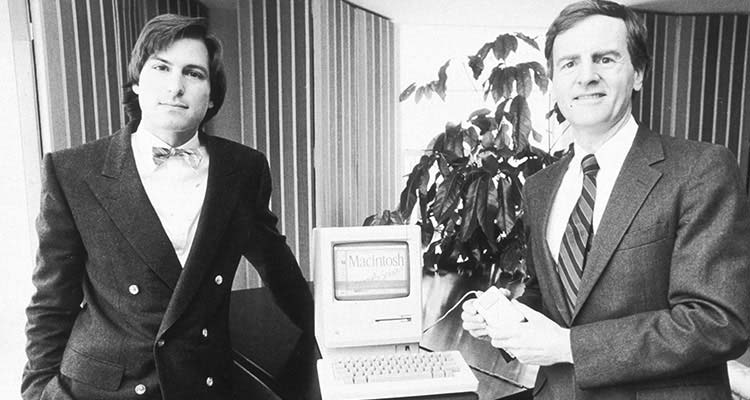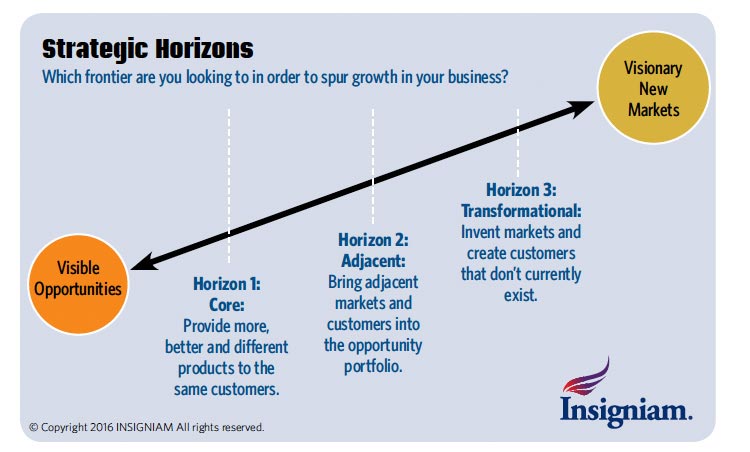The Power of Design Thinking
At an age when many executives are playing golf or writing memoirs, John Sculley is sounding the alarm.
The former CEO of Apple and Pepsi-Cola says many of today’s corporate giants are about to be bulldozed into oblivion unless they take action—now.
Cloud computing, mobility and machine intelligence will soon trigger an explosion of innovation, he says. Entrepreneurs can start companies with a fraction of the resources that were necessary just a few years ago, and they can move with unprecedented speed and agility. Forces like the sharing economy and the rise of a new breed of middle-class consumers in developing countries will fuel the next generation of billion-dollar companies. Those that aren’t ready, willing and able to blow up existing business models and face a new reality with design innovation may not survive.
The Customer Plan
Underlying all this transformation is the new power of customers, now firmly in control of the way companies and markets behave. Empowered by ubiquitous Internet access and social media, customers now have unprecedented access to information to evaluate their choices, and they trust each other’s opinions over marketers’.
“It’s fundamentally changing every business,” Sculley says. “Forget about the business plan and focus on the customer plan. A business plan looks back and tries to improve on what you’re already doing. A customer plan asks whether you can solve any really big customer problems.”
Yet, most big companies are so focused on protecting the day-to-day business that they don’t spot new, customer-driven opportunities, he adds. Kodak, for example, could have owned digital photography, but it was too focused on defending its legacy business.
Such commentary is almost de rigueur from an up-and-coming tech entrepreneur; it’s less expected from a veteran of big, established organizations. But Sculley has long understood the power customers wield over a company’s fate. More than 40 years ago, he watched a grandmother sip cola samples from two unmarked paper cups. To her surprise, the life-long Coke drinker discovered she preferred the taste of Pepsi. That insight led to the Pepsi Challenge, one of the longest-running and most successful marketing campaigns in history.
The Pepsi Challenge was a pre-Internet version of the customer conversations that now permeate social media, the same ones that can make (or break) companies. By blunting the force of big marketing budgets, the new democratized media environment levels the playing field and gives small startups a way to compete against established competitors.
The upshot for any executive fending off new players is simple, Sculley says. “Your reason to exist has to be around solving big customer problems.”
Empowered by ubiquitous Internet access and social media, customers now have unprecedented access to information to evaluate their choices, and they trust each other’s opinions over marketers’.
Making the Right Connections
The mark of a true leader is the ability to identify connection points, those intersections between disciplines that yield opportunity. With experience in tech, consumer marketing, health care, and cloud and mobile platforms, Sculley looks out for connections across sectors and then backs companies he believes are positioned to make the most of those intersections.
As the Affordable Care Act takes hold in the United States, for example, Sculley points to massive opportunities in a provision of the law that shifts the criteria for insurance payments from inputs to outcomes. Health care providers were long paid according to the procedures and treatments they administered (inputs). That gave them every incentive to schedule lots of office visits, tests and therapies, even if their value to patients was questionable. Now health care providers are paid for results, which means that doctors, hospitals and plan administrators are scrambling to find ways to keep patients out of hospitals and doctor’s offices.
The connection point is technology that can create new opportunities for remote diagnosis, treatment and monitoring. So Sculley, acting as vice chair, along with his brother David, are bringing their contacts and experience to help MDLIVE. The health care information company is building a platform that empowers patients, medical professionals and plan administrators to collaborate via voice, video, email and mobile devices.
Another example of cross-sector connections is how Ford Motor Co. is trying to bring vehicles, home appliances and new technologies together. The U.S. automaker announced in January that it will increase its efforts in intelligent mobility services by pairing its SYNC in-car technology with Amazon’s smart speaker and virtual assistant products, as well as with Wink, a home-automation system that can centrally control smart appliances, thermostats and lights. By networking all of these devices together, drivers will be able to voice-control their car and their home.
“We are completely rethinking how we approach the business,” Ford CEO Mark Fields said at the 2016 Consumer Electronics Show. “With one foot in today and one foot in tomorrow.”
Deriving Opportunities
Sculley also keeps an eye on derivative effects, structural shifts that open up new markets. For example, the adoption of smartphones and social networks spurred by Apple and Facebook (among others) means huge openings in both markets.
One derivative effect of the rapid mainstreaming of social media platforms, for example, is that “cloud computing has been commoditized,” Sculley says. Businesses and consumers are comfortable with cloud applications and data, as they use them every day on Facebook. “If cloud works for brand-new businesses, how can it be applied to established businesses?” Share on X
New England Funding Technologies LLC (NEFT), where Sculley is a board member and investor, is one attempt to answer this question. The company exploits the derivative effects of cloud computing to turn control of credit profiles over to the consumer and empower them to enhance their credit scores in real time. Called mPowerCredit, this online resource not only shortens the frustrating month-long (or longer) lead times credit bureaus need to update their records, but also reduces loan denials, increases borrowing and closes more deals. NEFT isn’t seeking to displace established institutions but rather to streamline operations in a way that creates more opportunities for consumers to obtain credit.
“There’s an opportunity to literally reconfigure the entire ecosystem of credit finance, from back office to banks to credit card companies, using a combination of technologies,” Sculley says.

The New Middle Class
At a macro level, Sculley sees huge derivative effects—and innovation opportunities—related to the new middle class now rising in developing markets. But organizations must recognize that it doesn’t look much like the old middle class in the United States and other developed countries.
“There’s a new group of at least 1 billion people who aspire to the American dream, but their definition of middle class is very different from Americans’,” he says. These upwardly mobile new professionals in cities like Mumbai and Shanghai aim to own houses, cars and other luxury items, but their income expectations are more modest than those of their American predecessors. Entrepreneurs willing to redefine their assumptions about the middle class and figure out ways to reduce the costs of so-called luxury items can find opportunities others miss and reap the rewards of huge sales volumes, Sculley says.
Endless is one example of a company trying to capitalize on this expanding customer base by building an innovative new computer designed with the needs (and price point) of the emerging middle class in Asia, Africa and South America in mind. The company’s $79 small, spherical PC built for the living room turns your television screen into a computer monitor and ships without a mouse or keyboard. The Endless Mini comes with apps designed to work offline or with limited connectivity. “People want a stable, simple computer that’s easy to use and won’t get viruses,” Endless CEO Matt Dalio told Newsweek. “And they need to be able to use it without the Internet.”
A challenge the company may face is that many consumers in the new global middle class may gravitate toward smartphones and tablets in lieu of computers. Naturally, Sculley is trying to claim some ground in this shifting landscape. In 2014, Sculley founded Obi Worldphone with the audacious goal of delivering full-featured smartphones to the developing world at prices two-thirds lower than established competitors. Why smartphones? In countries with a rudimentary or nonexistent consumer infrastructure, smartphones can be a hugely versatile tool, allowing users to easily buy goods, make payments or access health care information. The company that owns the smartphone market holds sway over an entire ecosystem.
Obi’s design gap strategy encompasses the power of all the factors Sculley extols to size up new markets: connection points, derivative technologies and macro shifts that give birth to new markets.
The fledgling company may also illustrate the power of entrepreneurs to out-innovate market powerhouses. Rather than investing heavily in R&D, Obi is building its products on the foundation of reference designs created by other smartphone makers. It’s innovating at the edge by focusing on lowering costs without sacrificing design. Betting the new emerging middle class will want to pay a little extra for iPhone-like usability, the startup plans to sell its devices in more than 50 countries by the start of 2017.
Tapping into the advantages of virtual infrastructure and cloud collaboration, Obi thinks it can make big money in a market vertically integrated competitors won’t touch. “We take what is a problem for others and turn it to our advantage,” Sculley says. And it doesn’t require the powers of some all-knowing business guru. “You don’t have to be a genius to do it.” Intelligence matters, but what it really comes down to is an insatiable curiosity, a fear of missing out.





